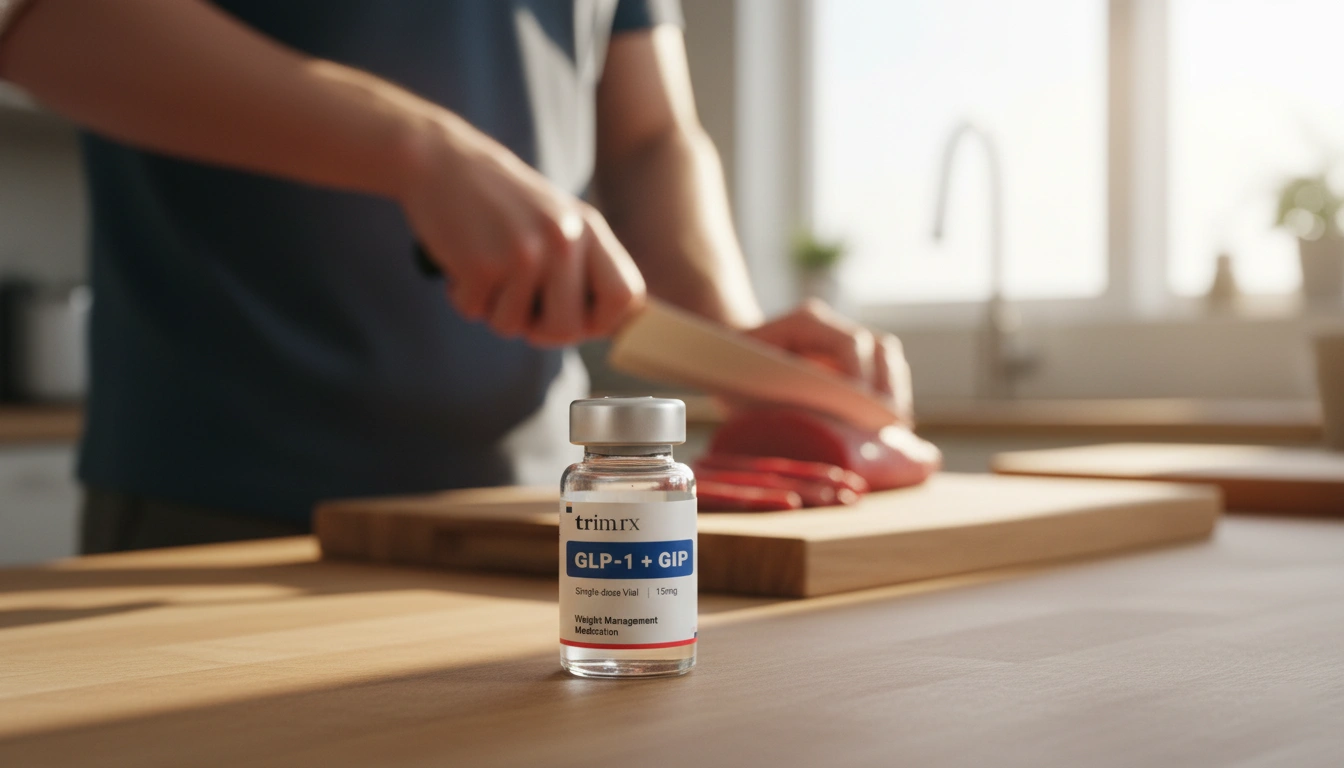How to Mimic GLP-1 Naturally: A Comprehensive Guide to Boosting Your Wellness

Introduction
Did you know that the hormone GLP-1, or glucagon-like peptide-1, plays a pivotal role in regulating your appetite and blood sugar levels? In fact, this hormone is so influential that medications designed to mimic its effects have recently transformed the landscape of weight loss and diabetes management. As the conversation around GLP-1 grows, many of us are left wondering: can we naturally increase GLP-1 levels in our bodies through diet and lifestyle changes?
Understanding GLP-1 is essential, especially as obesity and type 2 diabetes rates continue to rise across the globe. According to the CDC, over 42% of adults in the United States are classified as obese, and the prevalence of type 2 diabetes has also surged. With such alarming statistics, the need for effective, accessible interventions has never been more pressing. This blog post will provide you with insightful and actionable strategies for how to mimic GLP-1 naturally, helping you on your journey toward improved health and wellness.
By the end of this article, you will learn about the mechanisms of GLP-1, the foods that can enhance its levels in your body, the impact of exercise, and practical strategies for implementing these changes in your daily life. Together, we will explore how embracing a holistic approach to wellness can aid in regulating appetite, managing blood sugar, and achieving sustainable weight loss.
Understanding GLP-1: The Role of the Hormone in Your Body
GLP-1 is a hormone produced in the intestines that plays several crucial roles in metabolic health. Here’s how it works:
-
Stimulates Insulin Secretion: After we eat, GLP-1 signals the pancreas to release insulin, which helps lower blood sugar levels by facilitating the uptake of glucose into cells.
-
Slows Gastric Emptying: By slowing down how quickly food moves from the stomach to the intestines, GLP-1 helps prevent spikes in blood sugar and prolongs the feeling of fullness.
-
Reduces Appetite: GLP-1 interacts with receptors in the brain to signal satiety, making you feel full and reducing the urge to eat.
-
Inhibits Glucagon Secretion: It reduces the release of glucagon, a hormone that raises blood sugar levels, thereby helping to maintain balanced glucose levels.
As you can see, GLP-1 is a multitasking hormone crucial for keeping your metabolism in check. However, individuals with obesity may experience reduced GLP-1 secretion after meals, which can lead to increased hunger and difficulty in managing weight. Therefore, understanding how to mimic GLP-1 naturally can be a game-changer in your wellness journey.
Foods that Naturally Boost GLP-1 Levels
High-Fiber Foods
One of the most effective ways to enhance GLP-1 production is through dietary fiber. Fiber-rich foods not only promote gut health but also stimulate the release of GLP-1. Here are some excellent sources of fiber that you can incorporate into your diet:
- Whole Grains: Foods like oats, barley, and whole wheat bread are rich in soluble fiber, which helps regulate digestion and promotes GLP-1 release.
- Fruits and Vegetables: Apples, pears, carrots, and Brussels sprouts are high-fiber options that support GLP-1 levels.
- Legumes: Beans, lentils, and peas are excellent sources of both protein and fiber, making them ideal for boosting GLP-1.
Healthy Fats
Including healthy fats in your diet can also promote GLP-1 secretion. Research shows that unsaturated fats, particularly those found in olive oil and avocados, can effectively stimulate GLP-1 release. Here are some healthy fat options to consider:
- Avocados: Rich in fiber and monounsaturated fats, avocados can help increase GLP-1 levels while providing essential nutrients.
- Nuts and Seeds: Almonds, walnuts, and flaxseeds are packed with healthy fats and protein, supporting not only GLP-1 production but overall health.
- Fatty Fish: Salmon and mackerel are excellent sources of omega-3 fatty acids, which have been shown to enhance GLP-1 levels.
Protein Sources
Protein is another critical nutrient for stimulating GLP-1 secretion. Here are some protein-rich foods that can help:
- Eggs: Eggs are a fantastic source of protein and healthy fats, making them a great option for breakfast or any meal.
- Lean Meats: Chicken, turkey, and lean cuts of beef provide not only protein but also essential amino acids that can enhance GLP-1 levels.
- Plant-Based Proteins: Tofu, tempeh, and legumes are excellent for those following a plant-based diet, providing protein and fiber simultaneously.
By combining these food groups, you can create satisfying and nutritious meals that enhance GLP-1 levels naturally.
The Role of Gut Health in GLP-1 Production
Our gut microbiome plays a significant role in producing GLP-1. The trillions of bacteria residing in our intestines help break down food and produce metabolites that stimulate GLP-1 release. Here are some strategies to support your gut health:
Embrace Prebiotics
Prebiotics are fibers that feed beneficial gut bacteria. Foods high in prebiotics include:
- Garlic and Onions: These flavorful additions not only enhance meals but also serve as excellent sources of prebiotic fiber.
- Bananas: Particularly unripe bananas are rich in resistant starch, which can promote gut health.
- Chicory Root: Often used as a coffee substitute, chicory root is also a potent source of prebiotic fiber.
Consider Probiotics
Probiotics are live bacteria that can support gut health. Certain strains, such as Bifidobacterium and Lactobacillus, have been shown to enhance GLP-1 secretion. Incorporate probiotic-rich foods like:
- Yogurt: Choose plain, unsweetened yogurt to avoid added sugars.
- Kefir: This fermented dairy product is rich in probiotics and can be added to smoothies or consumed on its own.
- Sauerkraut and Kimchi: Fermented vegetables are excellent sources of probiotics and can be enjoyed as side dishes.
Maintain a Balanced Gut
A diverse gut microbiome is essential for optimal GLP-1 production. To support a healthy gut, consider:
- Avoiding Excessive Processed Foods: These often lack fiber and can negatively affect gut bacteria diversity.
- Staying Hydrated: Drinking plenty of water supports digestion and overall gut health.
- Limiting Antibiotic Use: Use antibiotics only when necessary, as they can disrupt the balance of gut bacteria.
The Impact of Exercise on GLP-1 Levels
In addition to dietary changes, regular physical activity can significantly boost GLP-1 levels. Engaging in both aerobic and resistance training exercises has been shown to:
- Enhance Insulin Sensitivity: Exercise improves the body’s ability to use insulin effectively, which can help regulate blood sugar levels.
- Increase GLP-1 Secretion: Studies suggest that both short bursts of high-intensity exercise and longer, moderate-intensity workouts can increase GLP-1 levels, providing lasting benefits even after the workout is over.
- Support Weight Management: Regular exercise helps maintain a healthy weight, which is crucial for optimal hormone balance.
Aim for at least 150 minutes of moderate-intensity exercise each week, incorporating strength training at least two days a week. Finding an activity you enjoy, whether it’s walking, cycling, swimming, or dancing, can make it easier to stay active.
Mindful Eating: A Key Component
How you eat can be just as important as what you eat. Mindful eating practices can help enhance GLP-1 secretion by fostering a greater awareness of hunger and satiety cues. Here are some tips for practicing mindful eating:
Slow Down
Take your time during meals. Eating slowly allows your body to register fullness signals more effectively, leading to a natural reduction in food intake. Aim to chew each bite thoroughly and savor the flavors of your food.
Listen to Your Body
Pay attention to your hunger and fullness cues. Eating when you’re hungry and stopping when you’re satisfied can help regulate GLP-1 and overall appetite.
Limit Distractions
Try to minimize distractions such as TV or smartphones during meals. Focusing on your food can enhance your dining experience and help you be more attuned to your body’s signals.
Conclusion
Mimicking GLP-1 naturally is not only achievable but also rewarding. By incorporating high-fiber foods, healthy fats, and proteins into your diet, supporting your gut health, engaging in regular exercise, and practicing mindful eating, you can effectively enhance your body’s GLP-1 levels. This holistic approach can lead to improved appetite regulation, better blood sugar management, and sustainable weight loss.
At TrimRx, we are dedicated to supporting your health journey by providing personalized, medically supervised weight loss solutions. If you’re interested in exploring our comprehensive weight loss programs and discovering if you qualify for our prescription options, consider taking our free assessment quiz here. Additionally, our quick-access supplements like GLP-1 Daily Support and Weight Loss Boost can provide additional support as you work toward your wellness goals.
FAQ
What is GLP-1 and why is it important?
GLP-1, or glucagon-like peptide-1, is a hormone produced in the intestines that plays a crucial role in regulating appetite and blood sugar levels. It stimulates insulin secretion, slows gastric emptying, and reduces appetite, making it essential for metabolic health.
How can I naturally increase my GLP-1 levels?
You can naturally increase GLP-1 levels by incorporating high-fiber foods, healthy fats, and lean proteins into your diet, maintaining a balanced gut microbiome, engaging in regular exercise, and practicing mindful eating.
Are there specific foods that boost GLP-1?
Yes, foods high in fiber (such as whole grains, fruits, and vegetables), healthy fats (like avocados and olive oil), and lean proteins (like eggs and chicken) can help boost GLP-1 levels.
Can exercise impact GLP-1 levels?
Absolutely! Regular physical activity, including both aerobic and resistance training, can enhance GLP-1 secretion and improve insulin sensitivity.
What role does gut health play in GLP-1 production?
A healthy gut microbiome is essential for optimal GLP-1 production. Eating prebiotics and probiotics can support gut health and enhance GLP-1 levels.
How can I incorporate mindful eating into my daily routine?
Practice mindful eating by slowing down during meals, listening to your hunger and fullness cues, and minimizing distractions while eating. This can help improve your awareness of appetite regulation.
By following these guidelines, you’re not just focusing on weight loss; you’re embracing a lifestyle that promotes overall health and well-being. Together, let’s work towards optimizing your health through understanding and enhancing GLP-1 naturally!

Transforming Lives, One Step at a Time
Keep reading
7 Tips for Sticking to GLP-1 Injection Schedules
Seven practical strategies to keep weekly GLP‑1 injections on schedule—pick a routine day, set reminders, manage side effects, rotate sites, and avoid missed doses.
Custom GLP-1 Dosing for Kidney Disease
Personalized GLP-1 dosing for CKD patients with monitoring, dehydration and hypoglycemia risk mitigation, and guidance across all kidney disease stages.
Semaglutide vs Tirzepatide: Approved Uses
Two leading diabetes and weight-loss drugs differ in FDA-approved benefits — one adds heart, kidney and liver protection; the other treats obstructive sleep apnea.



